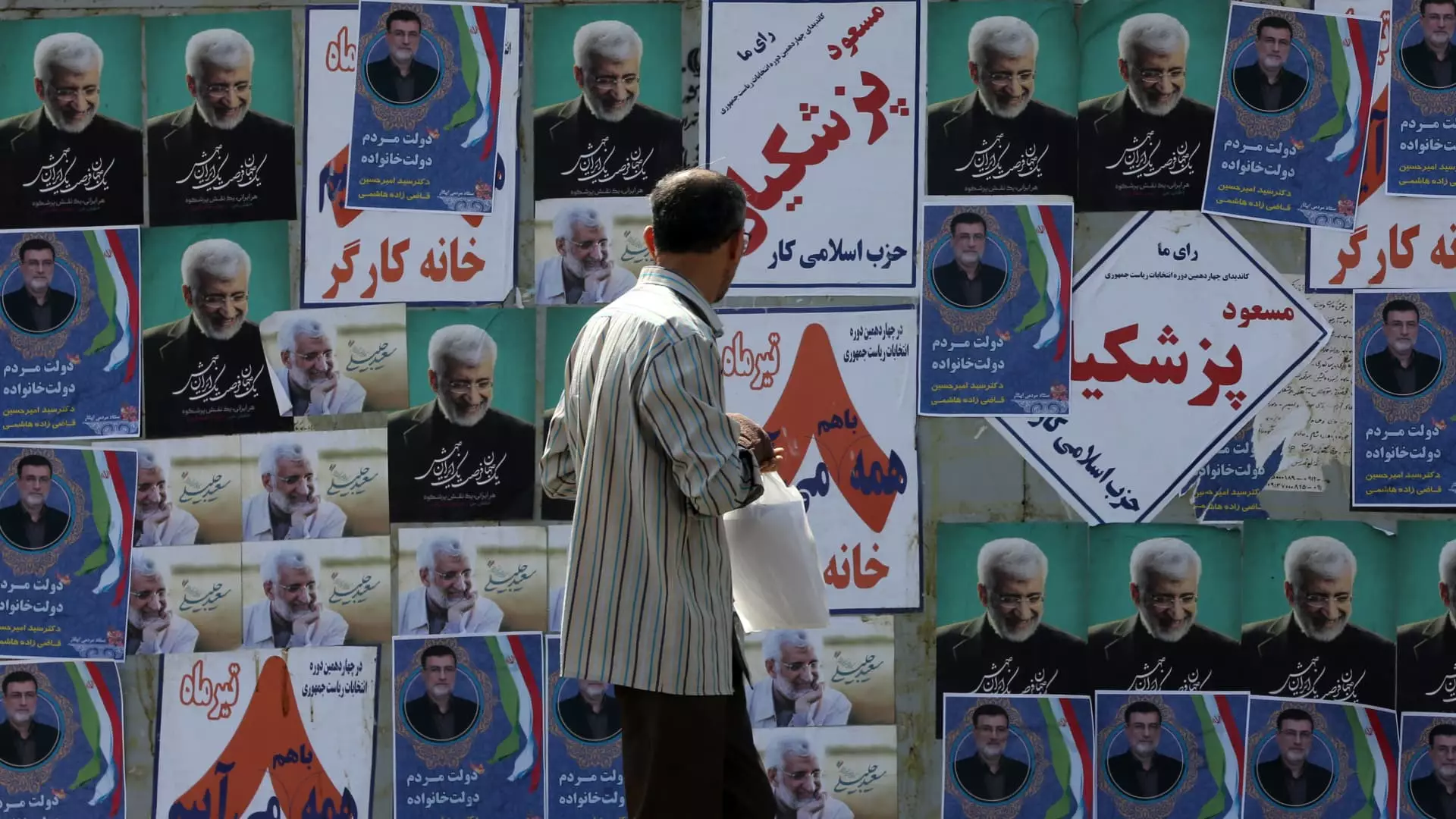The recent snap presidential election in Iran has revealed a close race between a low-key moderate candidate, Massoud Pezeshkian, and a protégé of Iran’s supreme leader, Saeed Jalili. The voter turnout of around 40% indicates a significant level of apathy among the Iranian population, reflecting their dissatisfaction with economic hardships and social restrictions imposed by the government.
While the election outcome may not lead to major shifts in Iran’s policies, it could have implications for the succession to Ayatollah Ali Khamenei, the country’s supreme leader. The next president, though lacking authority over key state matters controlled by Khamenei, can still influence the tone of Iran’s foreign and domestic policies. Pezeshkian’s platform, focused on detente with the West, economic reform, social liberalization, and political pluralism, contrasts with Jalili’s stance as a staunch anti-Westerner.
The low voter turnout in recent Iranian elections has raised concerns about the legitimacy of the clerical establishment. Public discontent over economic hardship, state corruption, and curbs on political and social freedoms undermines the ruling elite’s authority. Furthermore, growing regional tensions and Western pressure on Iran’s nuclear program add to the challenges faced by the government.
Pezeshkian’s candidacy represents a more moderate and reformist approach, appealing to voters seeking change and greater freedoms. In contrast, Jalili’s hardline positions signal a potential escalation of Iran’s confrontational foreign policy. The competition between these contrasting visions highlights the political divisions within Iran’s ruling elite and the broader society.
While the president’s influence on Iran’s nuclear program and support for militia groups may be limited, the position wields significant power in shaping day-to-day governance and policy direction. The next president will inherit a challenging economic landscape marred by sanctions, mismanagement, and corruption, requiring decisive leadership to address the country’s pressing issues.
Critics of the clerical establishment have voiced their dissatisfaction with the electoral process, citing low turnouts in recent years as evidence of eroding legitimacy. Calls for reform, justice, and accountability resonate among a disillusioned population, particularly the youth. Social media activism, highlighted by hashtags like #ElectionCircus, reflects growing dissent and demands for change.
The outcome of Iran’s presidential election will have far-reaching implications for the country’s political landscape, regional influence, and internal stability. The close race between moderate and hardline candidates underscores the deep divisions within Iranian society and the challenges facing the ruling elite. As Iran navigates complex geopolitical dynamics and domestic pressures, the choice of its next leader will shape the nation’s trajectory in the years to come.


Leave a Reply